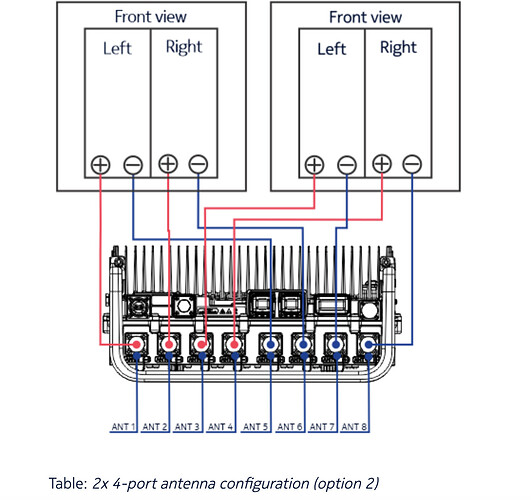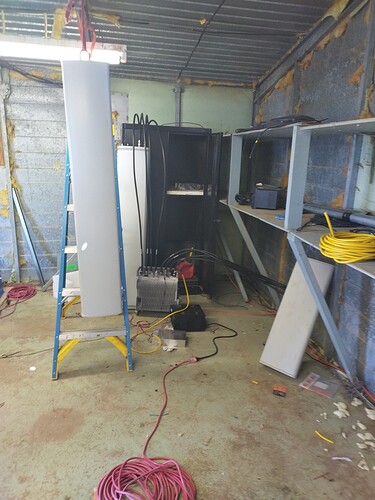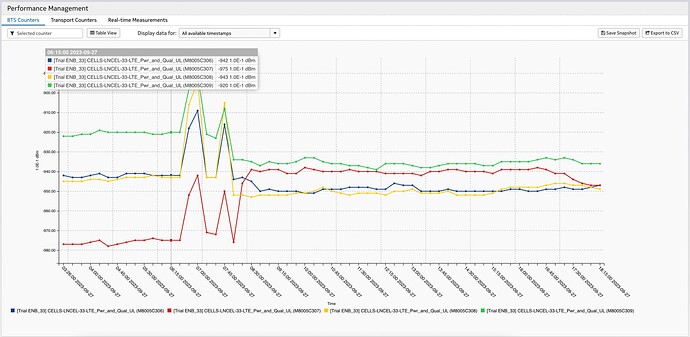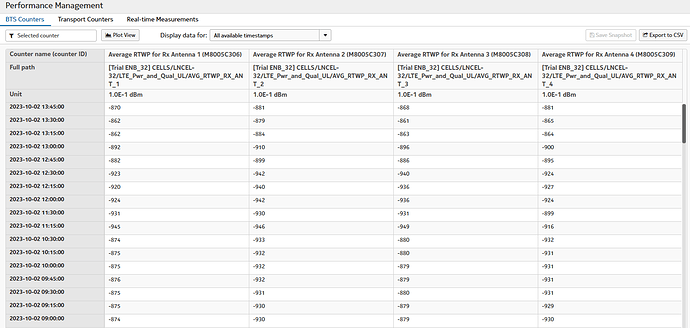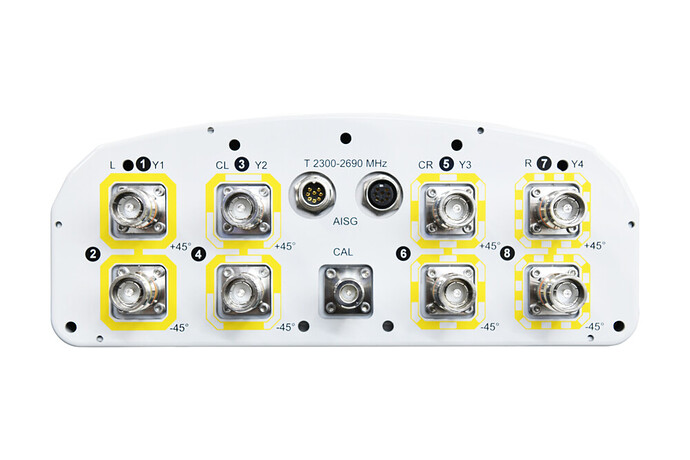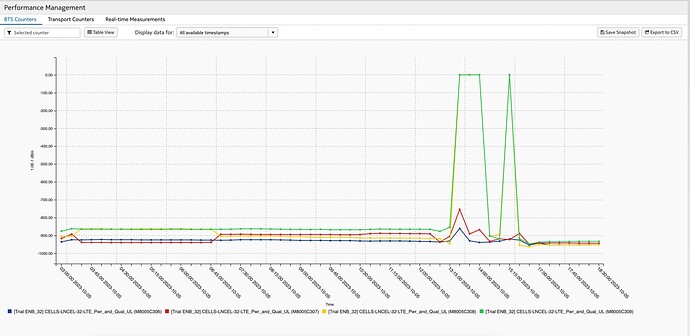Hello Experts,
I am relatively new to LTE. I am deploying a small, private FWA network with Airscale AZHL. I am configuring 4x4 and have a question about the cabling. I have had a problem with RTWP imbalance and finally decided to try a new antenna to solve the problem. I thought things were better but they are worse. RTWP is great but there is s significant imbalance in RSSI at the UE. It looks like positive polarization antenna are receiving signal and negative are not, So I check the antenna assignments and yes only the positive antenna are in use. This makes perfect sense because we changed the cabling of the antenna back to recommended in the manual:
So I changed the antenna assignment to match the new cabling of the antenna as denoted in the picture by 0 2 1 3. This caused the 5db RTWP imbalance to return but alleviated the imbalance on the UE side. Performance overall has now dropped back to 100Mbps.
The original 200Mbps + config was based on this wiring:
Which yields much better results even though the Nokia manual recommends the first picture as the appropriate wiring.
However,
If one reads about software antenna remapping……a different picture is presented:
This image and the possibility of antenna remapping would suggest that the wiring of the antenna ports is truly + - + - + - + -
and not as presented in the equipment documentation
BECAUSE……the IQ stream is polarization aware and the browser states that if antenna port remapping is not activated (which in most cases it is not) that the BTS assigns IQ data streams in sequence + - + - + - + - so sometimes if you’re antenna elements are oriented + - - + then you need to cross 2 cables physically or remap Them.
"Before the introduction of LTE3639, or when it is not active in a cell, the system configures CHANNEL objects automatically (for example the Distinguished Name of antenna line (antlDN) and Channel identifier (channelId) parameters), meaning that in the TX direction, consecutive I/Q data streams are mapped automatically to consecutive RF antenna ports in the RF unit. In this way, the operator knows which I/Q data stream is transmitted from each antenna port and can set up the wiring on the actual site.
The LTE3639 feature is activated or deactivated at cell level by using the Activate software antenna port re-mapping (actAntPortMap) parameter.
"
This is counter intuitive to markings on the Radio ports. The ports are all labeled - - - - on ports 1-4 and + + + + on ports 5-8.
This cannot be true if the documentation on antenna port remapping is accurate. If antenna port remapping works like it says it works then the ports go + - + - + - + - + BECAUSE the IQ data stream dictates the polarity of the port.
To sum it up in pictures………. this:
Cannot be true at the same time as this:
But I also know that I cannot assume I am right. even though I have seen 100% increase in throughput by wiring the antenna like this:
Here is a picture of the bottom of the antenna:
anyone here knows better than me. How the HELL are you supposed to cable this antenna to the AZHL?




